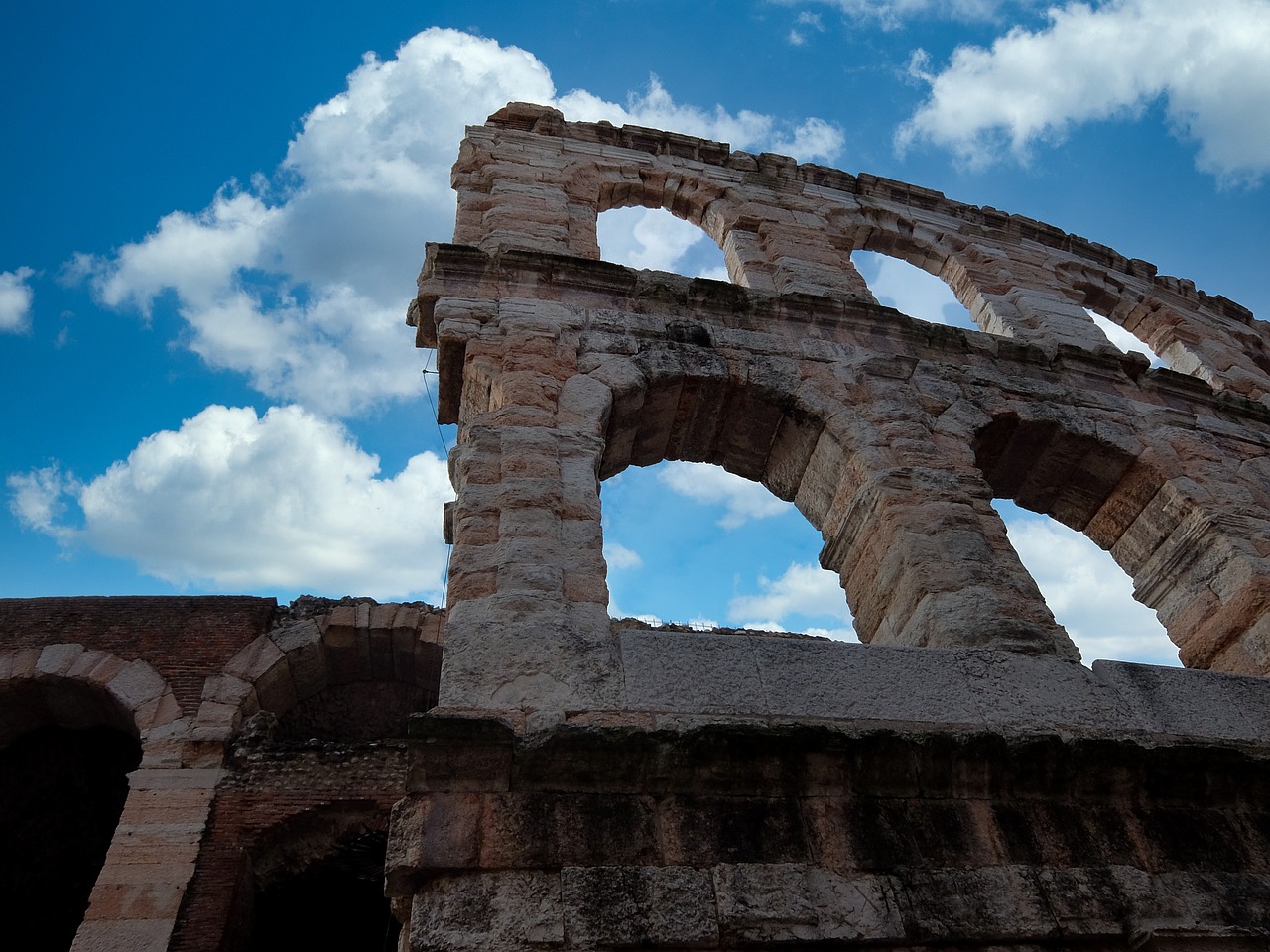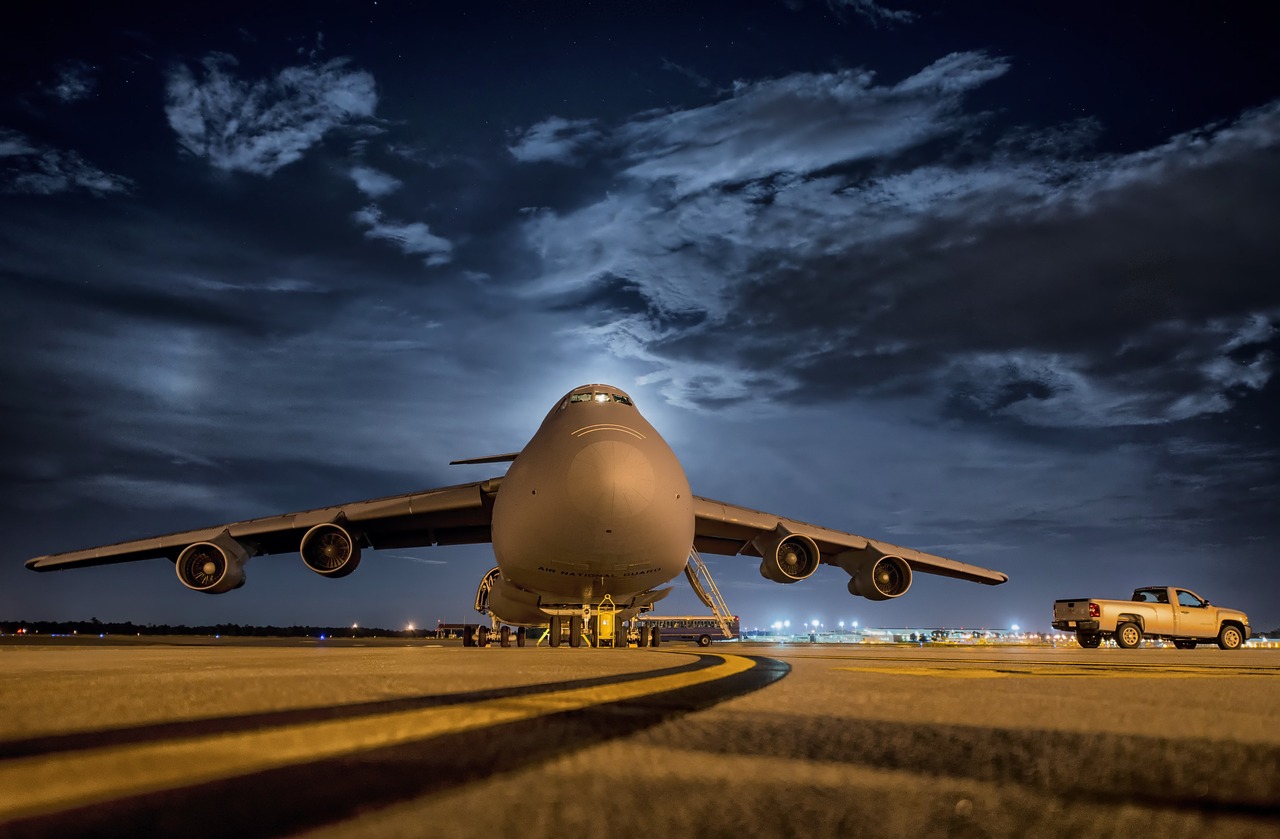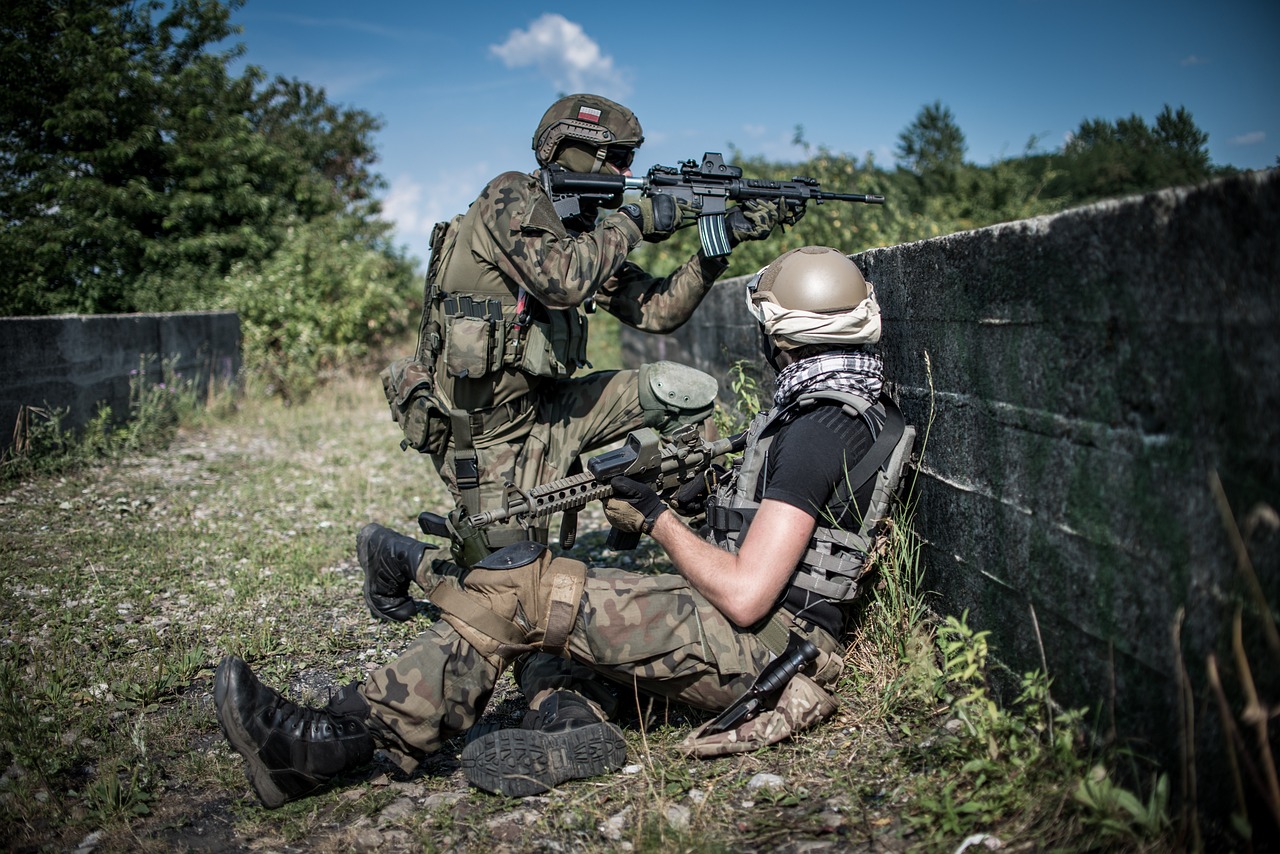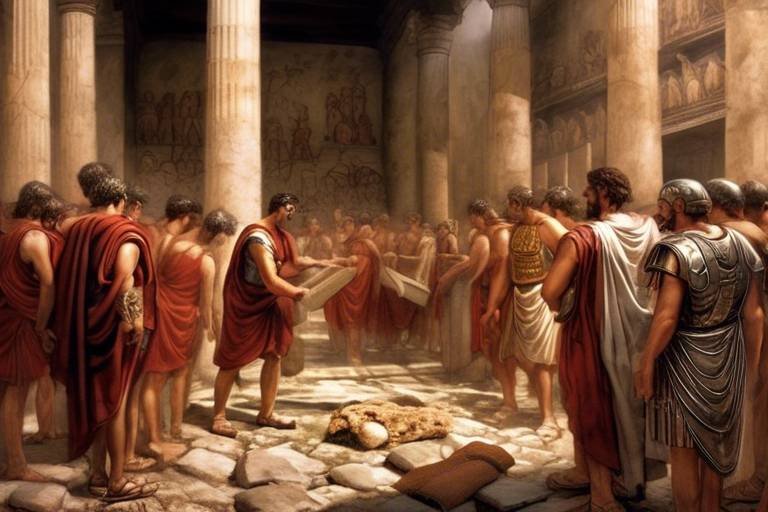The Secrets of Ancient Civilizations' Military History
Exploring the military strategies, weapons, and tactics employed by ancient civilizations throughout history reveals a treasure trove of knowledge and ingenuity. These ancient societies, despite lacking modern technology, possessed a remarkable understanding of warfare that allowed them to achieve astonishing military successes. From the mighty Roman legions to the enigmatic Mayan warriors, each civilization had its own unique approach to warfare that shaped the course of history.
As we delve into the military tactics of ancient civilizations, we uncover a world where chariots thundered across battlefields, phalanx formations stood unyielding, and siege tactics tested the limits of endurance. The secrets behind these military triumphs lie in the meticulous planning, innovative strategies, and unwavering discipline that characterized these ancient armies.
Imagine the awe-inspiring sight of Egyptian chariots charging into battle, their archers unleashing a hail of arrows upon their enemies. Picture the Roman legions, with their impeccable formations and advanced weaponry, marching fearlessly into the fray. Envision the Greek phalanx, a wall of shields and spears moving as one, a formidable force to be reckoned with.
Chinese military innovations, such as gunpowder and crossbows, revolutionized warfare and paved the way for strategic military treatises like Sun Tzu's The Art of War. Mayan warriors, adept at jungle warfare and skilled in defensive fortifications, employed unique tactics that confounded their foes.
The Viking raiders, masters of naval warfare, struck terror into the hearts of their enemies with swift longship attacks and berserker fighters. The Persian Empire, with its vast armies and diverse troop types, showcased military might that inspired both awe and fear.
Lastly, the Incan Empire's mastery of mountain warfare and specialized warrior units demonstrated a keen understanding of terrain and tactics. Their strategic retreats and bold maneuvers on the battlefield showcased a level of military sophistication that belied their ancient origins.

Egyptian Military Tactics
When it comes to ancient military tactics, the ancient Egyptians stand out for their unique strategies and battlefield prowess. The Egyptian military tactics were a crucial component of their success in warfare, allowing them to dominate their enemies and expand their empire. One of the key elements of Egyptian military tactics was the use of chariots, which provided the army with mobility and speed on the battlefield. These chariots were often equipped with archers, allowing the Egyptians to rain down arrows on their opponents from a distance.
In addition to chariots, the ancient Egyptians also employed organized formations in battle, such as the famous "battle line" formation. This formation allowed the Egyptian army to present a unified front to the enemy, making it difficult for opponents to break through their defenses. The Egyptians also utilized a variety of weapons, including bows and arrows, spears, and axes, to engage their enemies in close combat.
Furthermore, the Egyptians were known for their strategic use of terrain and fortifications in battle. They often positioned themselves near natural obstacles, such as rivers or mountains, to gain a tactical advantage over their enemies. Additionally, the Egyptians constructed fortified camps and defensive structures to protect their troops and supplies during military campaigns.
Overall, the Egyptian military tactics were a combination of mobility, organization, and strategic thinking, allowing them to achieve victory on the battlefield time and time again. By studying and understanding these tactics, we can gain valuable insights into the military strategies of one of the most powerful ancient civilizations in history.

Roman Legion Warfare
Exploring the military strategies, weapons, and tactics employed by ancient civilizations throughout history, shedding light on their military prowess and the secrets behind their military successes.
The Roman legions were renowned for their formidable military organization and combat techniques, which played a crucial role in the expansion of the Roman Empire. These highly disciplined soldiers were the backbone of Rome's military might, showcasing innovative tactics and utilizing advanced weaponry.
One of the key aspects of Roman legion warfare was their structured formation known as the 'maniple system.' This system allowed for flexibility and adaptability on the battlefield, enabling the legions to respond effectively to various threats and challenges.
The legions were equipped with a wide array of weapons, including the iconic gladius sword, pilum javelin, and scutum shield. These weapons, combined with the soldiers' rigorous training and unwavering discipline, made the Roman legions a formidable force to be reckoned with.
In battle, the legions employed tactics such as the 'testudo' formation, where soldiers would interlock their shields to form a protective shell against enemy projectiles. This formation exemplified the Romans' strategic prowess and ability to adapt to different combat scenarios.
Furthermore, the Roman legions were known for their siege warfare capabilities, utilizing innovative techniques to conquer fortified cities and strongholds. Their engineering skills, coupled with strategic planning, allowed them to breach enemy defenses and achieve military success.
Overall, Roman legion warfare was characterized by discipline, innovation, and strategic thinking, setting a high standard for military organizations throughout history.
Q: What made the Roman legions so effective in battle?
A: The Roman legions' effectiveness stemmed from their disciplined soldiers, innovative tactics, and advanced weaponry, combined with their structured formation and strategic thinking.
Q: How did the Roman legions adapt to different combat scenarios?
A: The Roman legions utilized the 'maniple system' for flexibility and the 'testudo' formation for protection, showcasing their ability to adapt to diverse battlefield challenges.
Q: What role did siege warfare play in Roman military campaigns?
A: Siege warfare was crucial for the Roman legions to conquer fortified cities and strongholds, showcasing their engineering skills and strategic planning in overcoming enemy defenses.

Greek Phalanx Formation
Exploring the military strategies, weapons, and tactics employed by ancient civilizations throughout history, shedding light on their military prowess and the secrets behind their military successes.
The Greek phalanx formation was a key military tactic used by ancient Greek city-states in battle. This formation was characterized by heavily armed soldiers standing shoulder to shoulder in a tight formation, creating a shield wall that presented a formidable defense against enemy attacks. The soldiers in the phalanx would use their long spears to thrust at the enemy, creating a wall of spear points that could break enemy lines.
One of the key aspects of the Greek phalanx formation was the coordination and discipline required from the soldiers. Each soldier had to maintain their position in the formation, moving and acting as one cohesive unit. This level of coordination allowed the phalanx to advance or hold their ground effectively in battle, presenting a united front against the enemy.
Additionally, the shield wall tactics employed by the Greek phalanx provided excellent protection for the soldiers, as the overlapping shields created a nearly impenetrable barrier against enemy projectiles and attacks. This defensive strategy allowed the phalanx to withstand enemy assaults and maintain their position on the battlefield.
Moreover, the spear thrusting techniques used by the soldiers in the phalanx were crucial for breaking through enemy lines and inflicting damage on the opposing forces. The long spears allowed the soldiers to attack from a distance, keeping the enemy at bay while maintaining a strong offensive presence on the battlefield.
In conclusion, the Greek phalanx formation was a highly effective military tactic that showcased the coordination, shield wall tactics, and spear thrusting techniques used by ancient Greek city-states in battle. This formation played a significant role in shaping the military history of ancient Greece and influencing future military strategies and tactics.

Chinese Military Innovations
Chinese military innovations have left a lasting impact on the history of warfare, with ancient Chinese civilizations introducing groundbreaking advancements that revolutionized military strategy and tactics. One of the most notable innovations was the invention of gunpowder, a game-changer that transformed the nature of warfare by introducing explosive projectiles and firearms.
Additionally, the development of crossbows by the ancient Chinese provided a significant advantage on the battlefield, offering long-range precision and piercing power that could penetrate armor. This technological advancement gave Chinese armies a formidable edge in combat, allowing them to strike with deadly accuracy from a distance.
Moreover, the ancient Chinese were pioneers in strategic military thinking, exemplified by Sun Tzu's renowned treatise, "The Art of War." This seminal work on military strategy continues to be studied and applied in modern times, emphasizing the importance of intelligence, deception, and adaptability in achieving victory on the battlefield.
Furthermore, the Chinese military innovations extended to the realm of fortifications, with the construction of the Great Wall of China standing as a testament to their strategic defensive capabilities. This massive defensive structure not only served as a physical barrier but also showcased the engineering prowess and organizational skills of the ancient Chinese civilization.

The Art of War.
Exploring the military strategies, weapons, and tactics employed by ancient civilizations throughout history sheds light on their military prowess and the secrets behind their military successes.
Investigating the military tactics and strategies utilized by the ancient Egyptian civilization reveals their use of chariots, archery, and organized formations in battle.
Delving into the military organization and combat techniques of the formidable Roman legions uncovers their disciplined soldiers, innovative tactics, and advanced weaponry.
Examining the iconic phalanx formation employed by ancient Greek city-states highlights the coordination, shield wall tactics, and spear thrusting techniques used in battle.
Exploring the military innovations of ancient Chinese civilizations, such as gunpowder, crossbows, and the development of strategic military treatises like Sun Tzu's The Art of War.
Uncovering the military strategies and tactics of the ancient Mayan civilization reveals their use of jungle warfare, defensive fortifications, and sacrificial rituals in battle.
Analyzing the raiding techniques and naval warfare tactics of the fierce Viking warriors showcases their swift longship attacks, berserker fighters, and strategic surprise assaults.
Exploring the military might of the ancient Persian Empire exposes its vast armies, innovative siege tactics, and utilization of diverse troop types in warfare.
Examining the battle strategies and military organization of the Incan Empire unveils their use of mountain warfare tactics, strategic retreats, and the integration of specialized warrior units.
The Art of War, a renowned military treatise attributed to the ancient Chinese military strategist Sun Tzu, delves into the intricacies of warfare, emphasizing the importance of strategy, deception, and understanding the enemy. This influential work continues to be studied and applied in various fields beyond military strategy, such as business and politics, due to its timeless wisdom and practical insights.
Q: Are these military strategies still relevant today?
A: Many of the principles outlined in ancient military strategies, including those in The Art of War, are still applicable in modern contexts and continue to influence strategic thinking.
Q: How did ancient civilizations develop such advanced military tactics?
A: Ancient civilizations honed their military tactics through years of warfare, innovation, and strategic thinking, adapting to the challenges they faced on the battlefield.
Q: Were there any common themes among ancient military strategies?
A: While each civilization had its unique tactics, there were common themes such as the importance of discipline, organization, and adaptability in achieving military success.

Exploring the military strategies, weapons, and tactics employed by ancient civilizations throughout history sheds light on their military prowess and the secrets behind their military successes.
Investigating the military tactics and strategies utilized by the ancient Egyptian civilization reveals their mastery of chariots, archery, and organized formations in battle. The Egyptians were known for their innovative use of chariots, providing them with speed and maneuverability on the battlefield. Their archers were highly skilled, able to rain down arrows on their enemies with precision. Additionally, the Egyptians employed organized formations to maintain cohesion and strength in the midst of combat.
Delving into the military organization and combat techniques of the formidable Roman legions showcases their disciplined soldiers, innovative tactics, and advanced weaponry. The Roman legions were renowned for their strict discipline and training, which allowed them to execute complex maneuvers with precision. Their use of innovative tactics, such as the famous Testudo formation, provided them with a tactical advantage on the battlefield. Moreover, the Romans utilized advanced weaponry, including the pilum and gladius, to devastating effect.
Examining the iconic phalanx formation employed by ancient Greek city-states highlights the coordination, shield wall tactics, and spear thrusting techniques used in battle. The Greeks perfected the phalanx formation, a tightly packed formation of soldiers with overlapping shields, providing them with a strong defensive wall against enemy attacks. Their use of long spears allowed them to thrust at their opponents from behind the shield wall, creating a formidable offensive strategy.
Exploring the military innovations of ancient Chinese civilizations, such as gunpowder, crossbows, and the development of strategic military treatises like Sun Tzu's The Art of War, reveals their advanced military capabilities. The Chinese were pioneers in the development of gunpowder, which revolutionized warfare with the invention of explosive weapons. Their use of crossbows provided them with long-range firepower, while strategic treatises like The Art of War emphasized the importance of deception and psychological warfare in military strategy.
Uncovering the military strategies and tactics of the ancient Mayan civilization unveils their expertise in jungle warfare, defensive fortifications, and sacrificial rituals in battle. The Mayans utilized the dense jungles of Mesoamerica to their advantage, employing guerrilla tactics and ambushes against their enemies. Their defensive fortifications, such as hilltop fortresses, provided them with strategic strongholds to defend against invaders. Additionally, the Mayans incorporated sacrificial rituals into their warfare, believing that offering blood to the gods would ensure victory in battle.
Analyzing the raiding techniques and naval warfare tactics of the fierce Viking warriors showcases their swift longship attacks, berserker fighters, and strategic surprise assaults. The Vikings were notorious for their lightning-fast raids along coastal regions, using their longships to strike quickly and retreat before a counterattack could be mounted. Their berserker fighters, known for their ferocity and fearlessness in battle, struck terror into their enemies. Furthermore, the Vikings employed strategic surprise assaults, catching their opponents off guard and seizing victory through bold and daring maneuvers.
Exploring the military might of the ancient Persian Empire unveils their vast armies, innovative siege tactics, and utilization of diverse troop types in warfare. The Persians fielded massive armies, capable of overwhelming their opponents through sheer numbers and logistical prowess. Their innovative siege tactics, such as the use of siege towers and battering rams, allowed them to breach enemy fortifications with ease. Additionally, the Persians employed diverse troop types, including cavalry, archers, and infantry, to create a versatile and adaptable military force.
Examining the battle strategies and military organization of the Incan Empire showcases their use of mountain warfare tactics, strategic retreats, and the integration of specialized warrior units. The Incas were masters of mountain warfare, utilizing the rugged terrain of the Andes to their advantage in battle. Their strategic retreats lured their enemies into traps and ambushes, allowing them to turn the tide of battle in their favor. Furthermore, the Incas integrated specialized warrior units, such as the elite imperial guard, to provide them with a strategic edge in combat.

Mayan Warfare Strategies
When delving into the military strategies and tactics of the ancient Mayan civilization, one cannot help but be intrigued by their unique approach to warfare. The Mayans were masters of jungle warfare, utilizing the dense foliage to their advantage in surprising their enemies and launching ambushes with swift precision. Their knowledge of the terrain gave them a significant edge in battles, allowing them to outmaneuver larger forces and strike where least expected.
Additionally, the Mayans were skilled in the construction of defensive fortifications, such as palisades and watchtowers, to protect their cities and strategic locations. These fortifications served as strongholds during conflicts, enabling the Mayans to withstand sieges and repel enemy attacks effectively. The strategic positioning of these defensive structures played a crucial role in their military defense.
Another intriguing aspect of Mayan warfare was their incorporation of sacrificial rituals into battle strategies. The Mayans believed in the importance of bloodletting and human sacrifice to appease their gods and ensure victory in conflicts. These rituals were performed before and during battles, instilling fear in their enemies and bolstering the morale of Mayan warriors.
Overall, the Mayans' warfare strategies were a combination of tactical ingenuity, defensive prowess, and religious fervor, making them a formidable force in ancient Mesoamerica.

Viking Raiding Techniques
Viking raiding techniques were not merely acts of violence but well-thought-out strategies that struck fear into the hearts of their enemies. The Vikings were known for their swift and surprise attacks, often targeting coastal villages and monasteries with their iconic longships. These longships were not only fast but also shallow, allowing them to navigate rivers and reach inland targets with ease. The element of surprise was crucial to their success, catching their opponents off guard and leaving little time for defense.
One of the key tactics employed by the Vikings was the use of berserker fighters, warriors who entered a frenzied state of battle rage, instilling terror in their enemies. These fierce fighters were known for their ferocity and lack of fear, striking fear into the hearts of those who faced them in combat. The psychological impact of encountering berserkers on the battlefield cannot be underestimated, often leading to quick surrenders or disorganized defenses.
In addition to their use of berserkers, the Vikings were also skilled in strategic planning and coordination during raids. They would carefully scout out potential targets, assessing vulnerabilities and planning their attacks meticulously. By understanding the layout of the land and the habits of their enemies, the Vikings were able to execute their raids with precision, maximizing their chances of success.
Furthermore, the Vikings utilized a combination of tactics during their raids, including hit-and-run attacks, feints, and diversionary tactics. These strategies kept their opponents guessing and off balance, making it difficult for them to mount a cohesive defense. By constantly adapting their tactics and remaining unpredictable, the Vikings maintained their edge in battle and ensured their continued success as raiders.

Persian Empire Military Might
The Persian Empire was renowned for its formidable military might, characterized by vast armies, innovative siege tactics, and the utilization of diverse troop types in warfare. One of the key strengths of the Persian military was its ability to field massive armies drawn from its vast empire, allowing for numerical superiority on the battlefield. These armies were composed of various troop types, including infantry, cavalry, and archers, each playing a crucial role in Persian military campaigns. In addition to its large army, the Persian Empire excelled in siege warfare, employing innovative tactics to conquer fortified cities and strongholds. The Persians were known for their use of siege engines such as battering rams, siege towers, and catapults, allowing them to breach enemy defenses and capture strategic positions. This expertise in siege warfare played a significant role in the expansion and consolidation of the Persian Empire. Furthermore, the Persian military was adept at adapting to different terrains and combat situations, utilizing a variety of tactics to outmaneuver and outwit their opponents. The Persians employed a combination of infantry, cavalry, and chariots in battle, allowing for flexibility and versatility in their military operations. This diverse array of troop types enabled the Persians to effectively respond to different threats and challenges on the battlefield. Moreover, the Persian Empire's military success can also be attributed to its organizational structure and leadership. The Persians had a well-defined chain of command, with skilled generals and officers overseeing military operations and ensuring coordination among different units. This hierarchical structure facilitated effective communication and decision-making, enhancing the overall effectiveness of the Persian military. In conclusion, the Persian Empire's military might was a result of its vast armies, innovative siege tactics, diverse troop types, adaptability in combat, and strong organizational structure. These factors combined to make the Persian military a formidable force in the ancient world, allowing the empire to achieve military success and exert its influence across vast territories.

Incan Battle Strategies
When it comes to the battle strategies of the Incan Empire, one cannot overlook their mastery of mountain warfare tactics. The rugged terrain of the Andes Mountains posed a unique challenge that the Incas turned into an advantage. They utilized the natural landscape to their benefit, employing guerrilla warfare techniques that involved ambushes, hit-and-run tactics, and swift movements through the mountainous terrain.
Moreover, strategic retreats played a crucial role in Incan battle strategies. Instead of engaging in prolonged conflicts that could result in heavy losses, the Incas strategically retreated when necessary, luring their enemies into unfavorable positions before launching counterattacks. This tactical flexibility allowed them to conserve their forces and strike back with precision.
The Incan Empire also excelled in the integration of specialized warrior units. These elite troops were trained rigorously from a young age in combat skills, discipline, and loyalty to the empire. They formed the backbone of the Incan military, showcasing exceptional prowess in battle and serving as a formidable force against their adversaries.
Overall, the Incan battle strategies were a combination of strategic thinking, adaptability to challenging terrains, and the utilization of specialized warrior units. Their military organization and tactics were instrumental in maintaining the empire's dominance in the Andean region for centuries.
Frequently Asked Questions
- What were some key military innovations of ancient Chinese civilizations?
Ancient Chinese civilizations were known for their military innovations, including the invention of gunpowder, crossbows, and the development of strategic military treatises like Sun Tzu's The Art of War.
- What made Roman legions so formidable in warfare?
Roman legions were renowned for their disciplined soldiers, innovative tactics, and advanced weaponry, which contributed to their success in battle and established them as a dominant military force in ancient times.
- How did the Mayans utilize jungle warfare in battle?
The Mayans were skilled in jungle warfare tactics, using the dense vegetation to their advantage for ambushes and surprise attacks, showcasing their adaptability and resourcefulness in military strategies.
- What characterized the Viking raiding techniques?
Viking raiding techniques were marked by swift longship attacks, the ferocity of berserker fighters, and strategic surprise assaults, allowing them to strike fear into their enemies and establish dominance in naval warfare.
- What were some notable battle strategies of the Incan Empire?
The Incan Empire employed mountain warfare tactics, strategic retreats, and specialized warrior units in their battle strategies, demonstrating their ingenuity and adaptability in various terrains and combat situations.



















